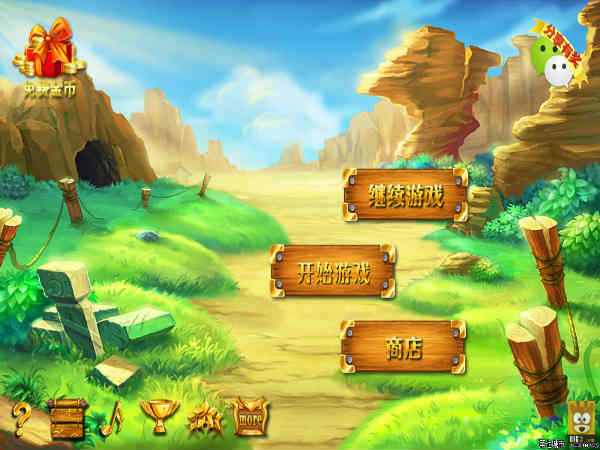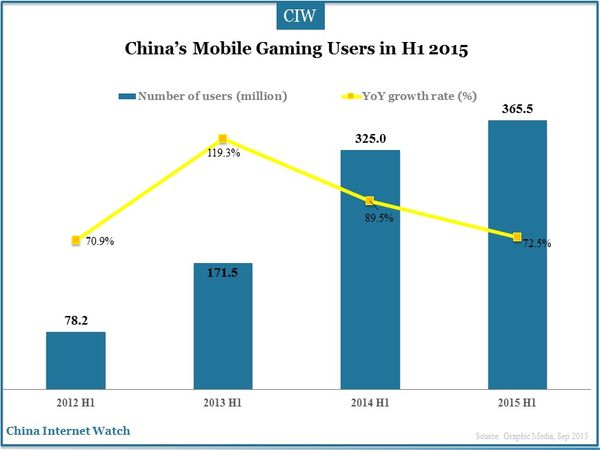
By the first half of 2015, the number of China’s mobile gaming users totaled 365.5 million, which achieved a growth rate of 12.5% compared with the same period last year.

China’s mobile gaming market began a rapid growth in 2012, which attracted a large number of entrepreneurs and investors owing. According to some experts, a successful mobile game costs 3 million yuan in research and development while gained 10 times profit for several months.
However, China’s large mobile gaming companies had a tendency to join forces together and caused greater pressure to small and medium sized developers. H1 2015 reached 20.93 billion yuan in the mobile gaming market with YoY growth of 67.2% and QoQ of 21.9%, and it is expected to generate more than 40 billion yuan.
Many considerable problems existed in China mobile gaming market, both home and domestic. For example, in China about 66% users would lose interests within only 24 hours after first access, and only 1% to 3% were willing to experience more with in-app payment; about 75% mobile gaming apps require promotion, adding more costs to companies; the traditional online gaming market could support an instant communication platform for users while mobile-end could not.
Mobile gaming expanded markets with an unbelievable growth rate. With the integration of resources as well as the improvement of hardware performance, the future of mobile gaming will face greater development potential. Tmall made an excellent demonstration for us: cooperating with some mobile gaming company, Tmall support one-click purchase when users had favorable clothes of gaming models. In the future, more mobile gaming companies would cooperate with e-business companies.
Also read: Moda, Tmall Virtual Dressing Room Debuted